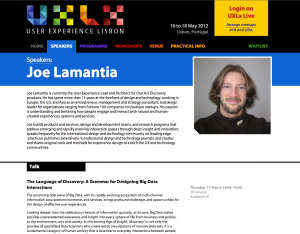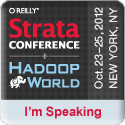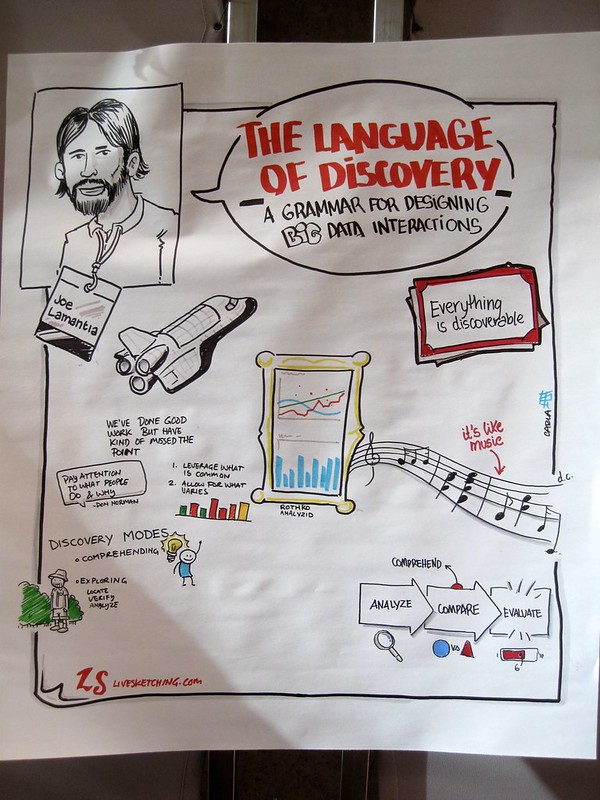I’ve just confirmed that I’ll be presenting a lightning talk at this year’s UX Lisbon, in May – I’m excited! There’s a great lineup of UX speakers, and I’m looking forward to catching up with the international UX community for the first time since moving back to the U.S.

I’m sharing some of the work I’ve been doing at Endeca / Oracle, around the question of interaction and sense making for the emerging category of big data. This is a UX question I don’t think is on the radar of many practitioners. And for those who are encountering it, the framings I see for how to engage with this from the UX perspective are scattered and — frankly — small. They tend to focus on the specifics of visualization, and miss the larger picture of how people engage in discovery tasks and activities every day, on small and large scales. If you’ve followed my work on other emerging interaction UX and interaction spaces like enterprise applications, games, mobile, social networks, and – before I returned to my roots in making products in a startup context – augmented reality, it’s easy to see I’m interested in the deep structure of new interaction spaces, and I think a forward-looking perspective on the broad and fundamental conceptual frame of reference for such new spaces is essential for anyone who intends to work in them in a serious and impactful fashion. So consider this talk an introduction to the package of ideas about technology, interaction, products, and their discovery aspects that I refer to as of the “Age of Insight” – the era in which everyone discovers, and everything is discoverable.
The 2012 UXLX program is online, the talk is titled The Language of Discovery: A Grammar for Designing Big Data Interactions, and the session description is below.
I hope to see a good mix of familiar and new faces at this growing event. Thanks to the organizers for including me in the program!
The Language of Discovery: A Grammar for Designing Big Data Interactions
The oncoming tidal wave of Big Data, with its rapidly evolving ecosystem of multi-channel information saturated environments and services, brings profound challenges and opportunities for the design of effective user experiences.
Looking deeper than the celebratory rhetoric of information quantity, at its core, Big Data makes possible unprecedented awareness and insight into every sphere of life; from business and politics, to the environment, arts and society. In this coming Age of Insight, ‘discovery’ is not only the purview of specialized Data Scientists who create exotic visualizations of massive data sets, it is a fundamental category of human activity that is essential to everyday interactions between people, resources, and environments.
To provide architects and designers with an effective starting point for creating satisfying and relevant user experiences that rely on discovery interactions, this session presents a simple analytical and generative toolkit for understanding how people conduct the broad range of discovery activities necessary in the information-permeated world.
Specifically, this session will present:
- A simple, research-derived language for describing discovery needs and activities that spans domains, environments, media, and personas
- Observed and reusable patterns of discovery activities in individual and collaborative settings
- Examples of the architecture of successful discovery experiences at small and large scales
- A vocabulary and perspective for discovery as a critical individual and organizational capability
- Leading edge examples from the rapidly emerging space of applied discovery
- Design futures and concepts exploring the possible evolution paths of discovery interactions
Related posts:





